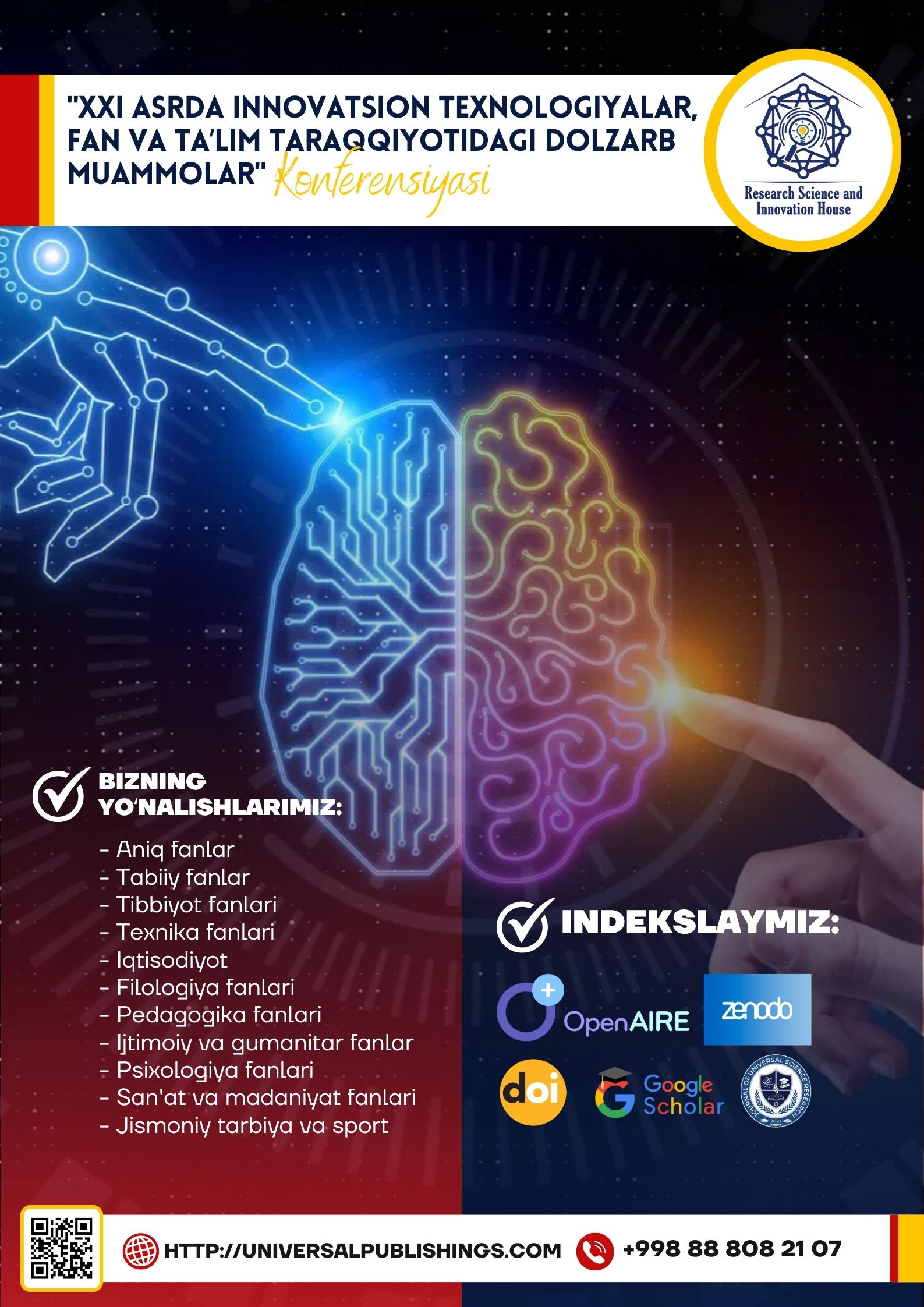Abstract
This article provides a comprehensive overview of the articulatory and acoustic features of speech sounds, focusing on the critical role of speech organs in the production of these sounds. It delves into the fundamental concepts of articulatory phonetics, including the place and manner of articulation, as well as the concept of voicing, which are essential for understanding how different sounds are produced in the vocal tract. Additionally, the article explores the key acoustic features such as frequency, amplitude, formants, and voice onset time (VOT), which define the physical properties of speech sounds as they travel through the air. It also highlights the function of various speech organs, distinguishing between active articulators (such as the tongue and lips) and passive articulators (like the teeth and alveolar ridge). Overall, the article bridges the study of sound production and its acoustic characteristics, offering a holistic view of how humans produce and perceive speech. This serves as a foundational resource for anyone interested in phonetics, linguistics, or speech science.
References
1. Chomsky, N., & Halle, M. (1968). The Sound Pattern of English. MIT Press.
2. Clark, J., & Yallop, C. (1995). An Introduction to Phonetics and Phonology. Blackwell Publishers.
3. Crystal, D. (2008). A Dictionary of Linguistics and Phonetics. Blackwell Publishing.
4. Ladefoged, P. (2001). Vowels and Consonants: An Introduction to the Sounds of Languages. Blackwell Publishing.
5. Laver, J. (1994). Principles of Phonetics. Cambridge University Press.
6. Roach, P. (2009). English Phonetics and Phonology: A Practical Course. Cambridge University Press.
7. Verhoeven, J. (2017). Introduction to Phonetic Science. Oxford University Press.
8. Teshaboyeva, N., & Mamayoqubova, S. (2020). COMMUNICATIVE APPROACH TO LANGUAGE TEACHING. In МОЛОДОЙ ИССЛЕДОВАТЕЛЬ: ВЫЗОВЫ И ПЕРСПЕКТИВЫ (pp. 409-414).
9. Teshaboyeva, N. (2020). LINGUISTIC PERSONALITY, ITS STRUCTURAL CHARACTERISTICS IN THE NEW PERSPECTIVE DIRECTIONS. In МОЛОДОЙ ИССЛЕДОВАТЕЛЬ: ВЫЗОВЫ И ПЕРСПЕКТИВЫ (pp. 415-420).
10. Teshaboyeva, N. Z. (2019). TEACHING ENGLISH THROUGH LITERATURE INTESL AND TEFL CLASSROOMS. In СОВРЕМЕННЫЕ ТЕХНОЛОГИИ: АКТУАЛЬНЫЕ ВОПРОСЫ, ДОСТИЖЕНИЯ И ИННОВАЦИИ (pp. 82-84).
11. Хидирова, Д., & Тешабоева, Н. (2022). Pedagogical conditions for the development of the healthy thinking in students. Zamonaviy innovatsion tadqiqotlarning dolzarb muammolari va rivojlanish tendensiyalari: yechimlar va istiqbollar, 1(1), 120-122.
12. Gaybullayeva, N. D. K., & Kizi, T. N. Z. (2022). THE ROLE OF INNOVATIVE METHODS FOR LISTENING COMPREHENSION IN TEACHING LANGUAGE LEARNERS FOREIGN LANGUAGES AND MAINLY ENGLISH. Central Asian Research Journal for Interdisciplinary Studies (CARJIS), 2(10), 8-10.
13. Teshaboyeva Nafisa Zubaydulla qizi, Jurayev Muhammadrahim Murod o’g’li, & Mamirova Munisa Rajab qizi. (2021). Language Learning Culturally and the Role of Literature in Teaching Process. Central Asian Journal of Theoretical and Applied Science, 2(3), 1-5. Retrieved from https://www.cajotas.centralasianstudies.org/index.php/CAJOTAS/article/view/84
14. Teshaboyeva, N. (2023). THE IMPORTANCE OF TOURISM IN PRESENT DAY. Журнал иностранных языков и лингвистики, 5(5).
15. Teshaboyeva, N. (2023). THE MODERN INNOVATIVE TECHNOLOGIES IN TEACHING FOREIGN LANGUAGES. Журнал иностранных языков и лингвистики, 5(5).
16. Teshaboyeva, N. Z. (2023, November). Adjective word group and its types. In " Conference on Universal Science Research 2023" (Vol. 1, No. 11, pp. 59-61).
17. Teshaboyeva, N. Z. (2023, November). Modifications of Consonants in Connected speech. In " Conference on Universal Science Research 2023" (Vol. 1, No. 11, pp. 7-9).
18. Teshaboyeva, N., & Rayimberdiyev, S. (2023, May). THE IMPORTANCE OF USING MULTIMEDIA TECHNOLOGY IN TEACHING ENGLISH CLASSES. In Academic International Conference on Multi-Disciplinary Studies and Education (Vol. 1, No. 8, pp. 149-153).
19. Nafisa, T., & Marina, S. (2023). TEACHING AND LEARNING OF ENGLISH VOCABULARY IN TESL AND TEFL CLASSROOMS. International Journal of Contemporary Scientific and Technical Research, 465-469.

